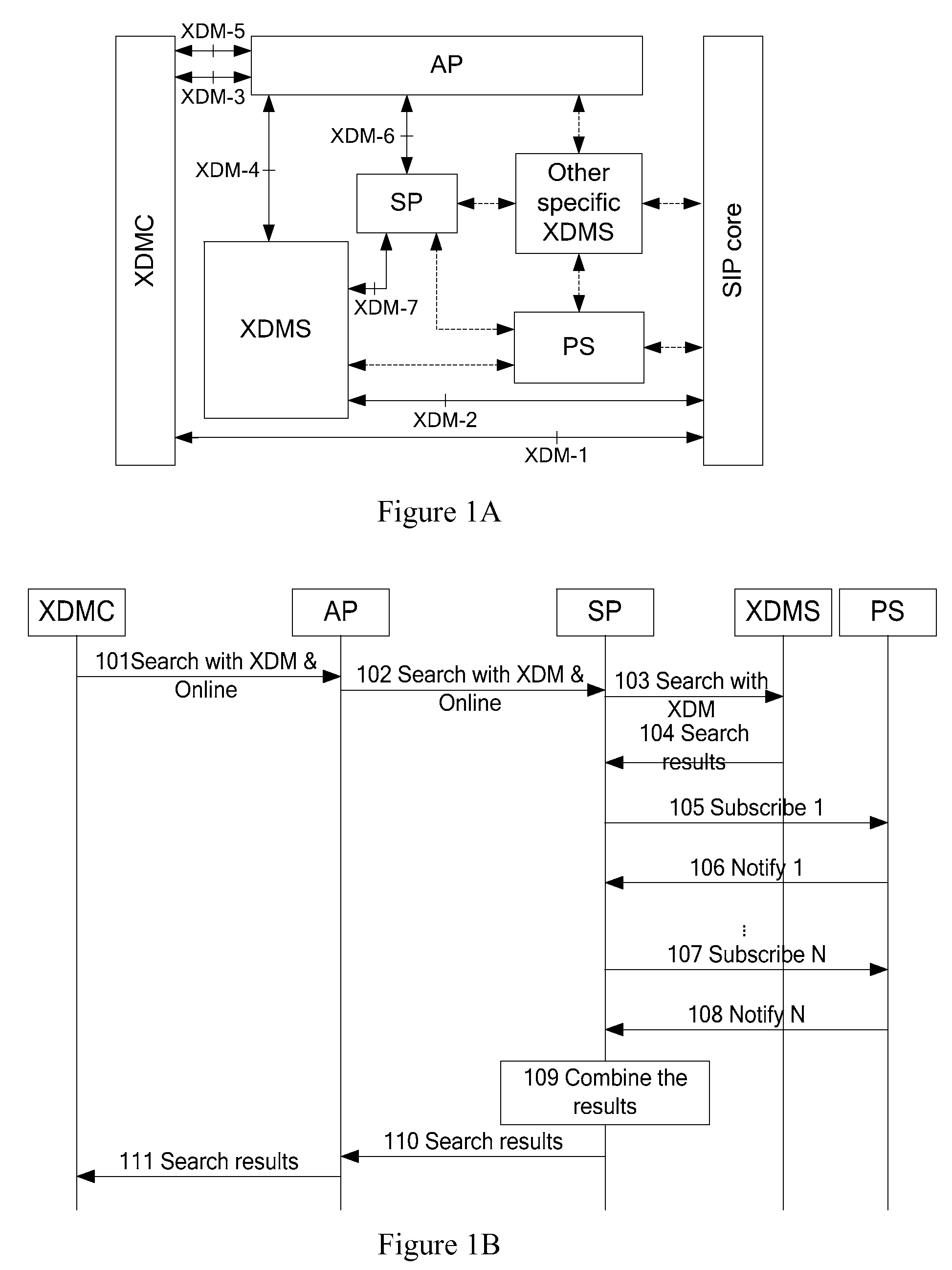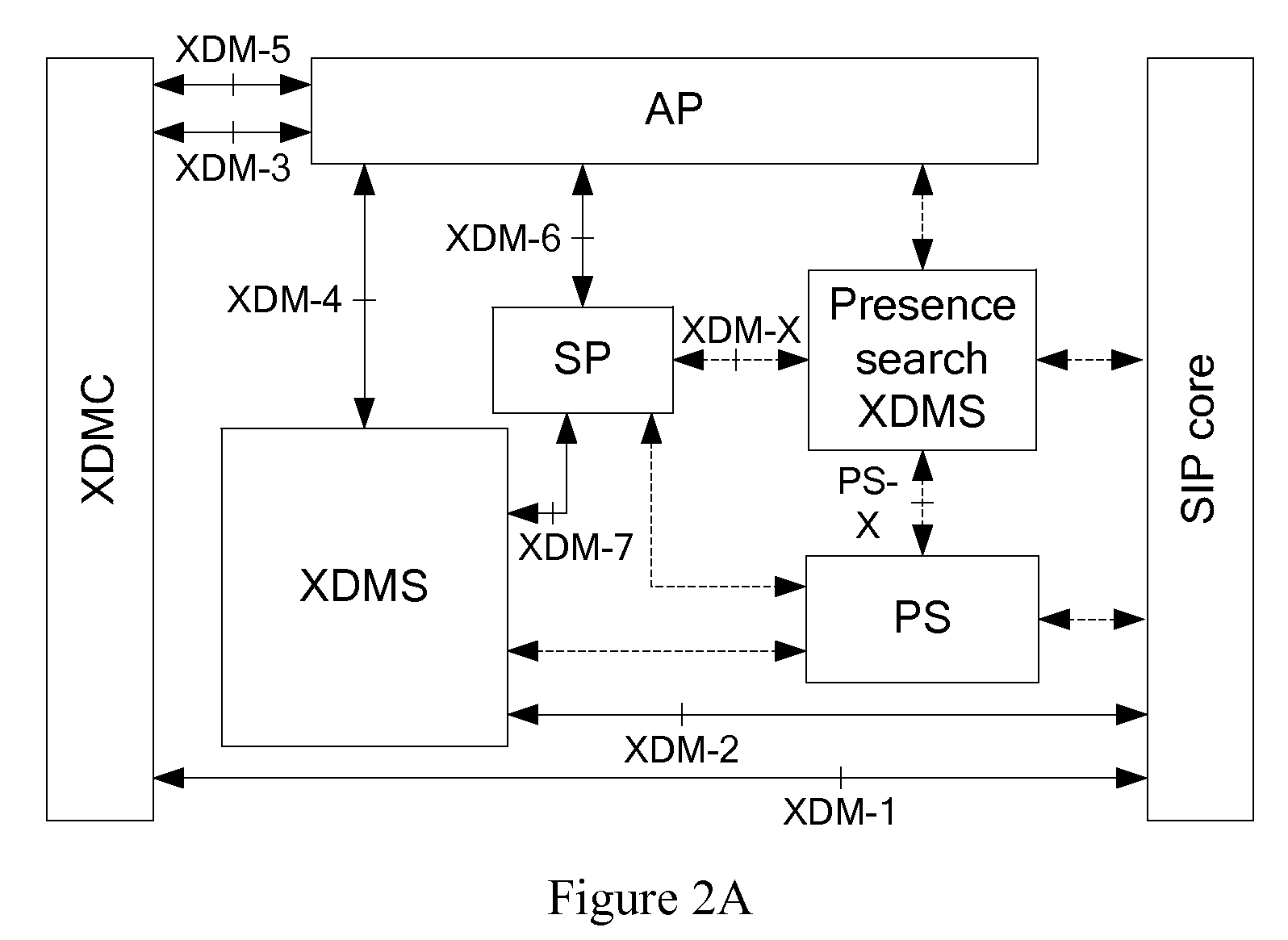Method and system for searching for online users
a technology for online users and search methods, applied in the field of data communication, can solve the problems of long search delay, slow response to xdmc, low efficiency, etc., and achieve the effect of reducing the frequency of communication between communication entities and the communication burden of each communication entity, preventing additional time consumption, and improving search efficiency
- Summary
- Abstract
- Description
- Claims
- Application Information
AI Technical Summary
Benefits of technology
Problems solved by technology
Method used
Image
Examples
first embodiment
[0056]FIG. 5A shows the structure of a system according to the present invention. As shown in FIG. 5A, the system includes an XDMC, an AP, an SP, an XDMS, a storage unit, and a PS. The SP and the XDMS share a same storage unit, that is, a same storage unit is set for the SP and the XDMS. Thus, the storage unit stores the basic information and status information of users, where the status information of users is obtained by the SP through the interaction with the PS. The XDMS may add, change or delete the basic information of users in the storage unit, for example, the XDMS may add the basic information items of users or add users. The SP may update the status information of users in the storage unit according to the current online information of users provided by the PS.
[0057]FIG. 5B shows the flowchart of the first embodiment of the present invention. As shown in FIG. 5B, the process of searching for online users includes the following steps:
[0058]Step 501: The SP obtains the statu...
second embodiment
[0063]FIG. 6A shows the structure of a system according to the present invention. As shown in FIG. 6A, the system includes an XDMC, an AP, an SP, an XDMS, a PS, a first storage unit set for the SP, and a second storage unit set for the XDMS, where the second storage unit stores the basic information of users. The first storage unit stores the basic information and status information of users. The basic information of users is obtained by the SP through interaction with the XDMS, and the status information of users is obtained by the SP through the interaction with the PS.
[0064]FIG. 6B shows the flowchart of the second embodiment of the present invention. As shown in FIG. 6B, the process of searching for online users includes the following steps:
[0065]Step 601: The SP obtains the basic information of all the users (Get Personal Info & Timed Get) from the XDMS and stores the basic information of users in the first storage unit. The SP may actively obtain the basic information of all t...
PUM
 Login to View More
Login to View More Abstract
Description
Claims
Application Information
 Login to View More
Login to View More - R&D
- Intellectual Property
- Life Sciences
- Materials
- Tech Scout
- Unparalleled Data Quality
- Higher Quality Content
- 60% Fewer Hallucinations
Browse by: Latest US Patents, China's latest patents, Technical Efficacy Thesaurus, Application Domain, Technology Topic, Popular Technical Reports.
© 2025 PatSnap. All rights reserved.Legal|Privacy policy|Modern Slavery Act Transparency Statement|Sitemap|About US| Contact US: help@patsnap.com



